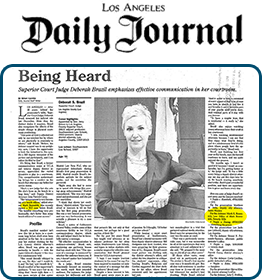The way that the law is written is that if anybody owns or has access to a vehicle, it is required to have an ignition interlock following a DUI conviction. This applies to a vehicle’s title that includes multiple names (i.e. husband and wife; father and son). If the person who is convicted of a DUI has access to the vehicle, it needs to have an ignition interlock device installed.
The law goes so far as to say that even if you own a car but it is nonoperational and it is registered as a nonoperational vehicle—it could be up on blocks in your front yard—if you own that car or have access to that car, you are required to have an ignition interlock device installed in it.
Limited Exceptions Include Work Vehicles
There are some limited exceptions if someone drives a work vehicle. They can get an exception to drive a work vehicle without the ignition interlock device. However, it does require getting the employer involved in the process by both letting the boss know a license was suspended because of a DUI and getting paperwork filled out ahead of time.
The IID Will Randomly Test the Driver throughout the Time They Are Operating the Vehicle
The ignition interlock device is designed to test randomly throughout the driving sequence, throughout the driving pattern. So before someone starts a car, they would need to blow into it and get a clean breath sample to get the car started. Once they are driving, the machine will randomly go through what is called a rolling test.
As the person is driving, the machine will prompt them to pick up the mouth piece and provide another alcohol free sample to show the ignition interlock machine that the person who is driving remains alcohol free. This is to stop somebody who may drive to a bar and leave the car running in the parking lot and then come back at a later time to drive.
For Safety Reasons, the IID Does Not Disable the Vehicle While Someone Is Driving but Will Report a Violation
It would be a safety hazard to have the ignition interlock turn off the car. So if somebody is driving and it prompted them for a test, if they were to give a positive test or they were to give no test at all, it’s not going to turn the car off. It is just going to record it and it is going to note it in the computer. The next time the machine is checked for maintenance purposes, it will download and report that information.
The ignition interlock devices are required by the law to be checked for maintenance purposes every 60 days. Throughout the process it is going to be calibrated and checked for accuracy both before it’s installed and when it’s installed. Then every 60 days, the person who has it in their car is going to need to bring the car back to the service station where they had it installed to have the memory downloaded and have it checked for accuracy.
The Driver Is Responsible for the Costs Associated with the IID Installation and Maintenance
The costs of the ignition interlock device are going to vary a little bit depending on the provider. As I mentioned earlier, you are going to have different providers given different equipment and different levels of services. So some are going to be a little more expensive and some are going to be a little less expensive.
You need to make sure that you get the right balance because you don’t want to get caught with a car that doesn’t start due to faulty equipment. However, you don’t want to pay any more than you have to.
The companies that install and maintain the ignition interlock devices usually charge an installation fee and a removal fee. That could be approximately $100 to install and $50 to remove. Additionally, they will charge the monitoring fee while you have it on the car. That charge will run between $50 to $100 a month to maintain.
Most companies charge about $75 a month to maintain the machines, to check them for accuracy as required, and also to report the information to the Department of Motor Vehicles as required. You need to have it reported when it is installed and when it is maintained and then when it is removed.
All that paperwork is sent to the Department of Motor Vehicles in Sacramento electronically and there are also some costs associated with the Department of Motor Vehicles itself. If it has to reissue a license, there may be an $85 fee.
First-Time DUI Offenders May Pay as Much as $500 to $600 for the IID
On a standard first time DUI with installation, removal, and maintenance for a five month period of time, it is not unusual to be about $500 or $600 in costs that are associated with it. That is something that needs to be taken into consideration while you are in court working out a deal.
California Residents Outside of Los Angeles That Receive a DUI within Los Angeles Are Required to Install the IID
On the ignition interlock device, if somebody is charged with a DUI in one of the pilot counties like Los Angeles—even if they don’t live in Los Angeles—if they are convicted of a DUI in Los Angeles, then they will still be required to install the ignition interlock device. If the driver lives in Orange County or San Bernardino County and they come into Los Angeles and get a DUI, they will need the ignition interlock device for driving in their home county too.






 Personal Attention
Personal Attention Every criminal case is unique and no attorney can guarantee the outcome of a case. The information on this site is legal advertising and for general information only. Using this site, requesting books, information, consultations or communicating with Attorney Rosenfeld through its site does not form an attorney/client relationship.
Every criminal case is unique and no attorney can guarantee the outcome of a case. The information on this site is legal advertising and for general information only. Using this site, requesting books, information, consultations or communicating with Attorney Rosenfeld through its site does not form an attorney/client relationship.








